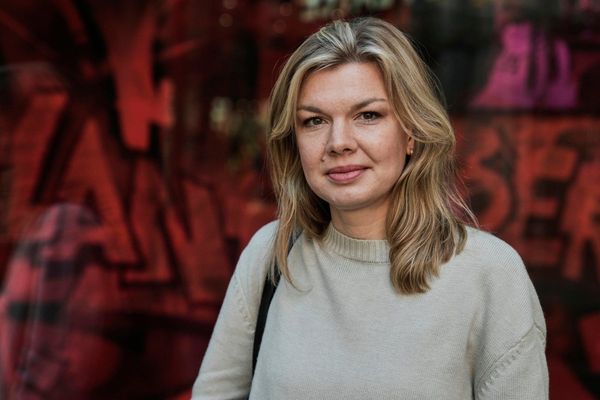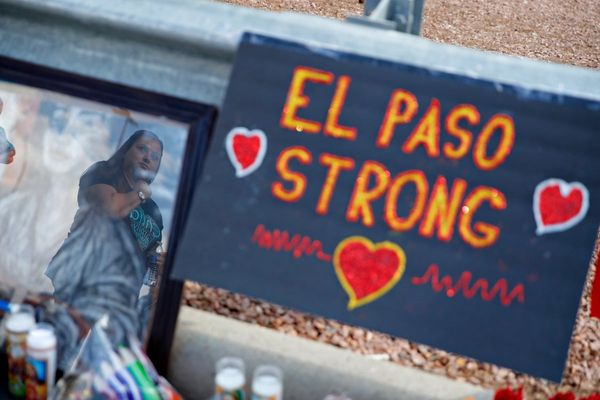
On London’s Northern line, on my way to Tokyo by way of King’s Cross and Heathrow Airport, I raise my fingers to my ears as the train approaches the first of the two worst screeches in the tunnel between the Camden Town and Euston stations. I gaze at the Northern line map and at two euphonic names on it, Highgate and Moorgate. Even after years of living in London and commuting to Heathrow for my flights as a long-haul airline pilot, these names fill me with a sense of well-being—of safety, even.
Growing up in Pittsfield, a small city in western Massachusetts, I struggled with loneliness, a speech impediment—I couldn’t make an r sound, which meant folks often couldn’t understand my first name—and the growing realization that I was gay. I found comfort in my model airplanes, in the names of the cities marked on my illuminated globe, and in the detailed city plans in the back pages of my father’s atlas. From these—airplanes, a globe, maps—I assembled my dreams of traveling far beyond Pittsfield, becoming a pilot, and finding a place where I might someday be myself.
In elementary and middle school, I never thought about the edges of cities, perhaps because Pittsfield seemed to have none. As you move away from Pittsfield’s small downtown, the streetscape fades almost organically into the forested hills of the Berkshires. Later, my history teacher Mr. Gilson taught me about walled cities, and as I continued to locate all my hopes for a chance to be myself in distant metropolises, I began to appreciate that a place that could offer such protection might itself need protecting.
[Read: Lima’s ‘Wall of Shame’ and the art of building barriers]
“What line separates the inside from the outside, the rumble of wheels from the howl of wolves?” Italo Calvino asks in Invisible Cities. Such lines once took the form of rings of earthworks or masonry that helped safeguard urban concentrations of people, wealth, and power. But as cities have grown—and survived, thanks in part to their ramparts, into ages in which sieges and invasions were receding concerns—they have tended to take down their walls. The stones might have been useful for other structures, and the paths of many demolished walls became roads, especially ring roads.
Today, in many cities, gates live on in the names of neighborhoods, streets, churches, and stations, each an indication of where a portal—perhaps to an older and smaller incarnation of the current metropolis, or to a mere castle or palace within it—no longer stands.
For me, the sense of both greatness and protection that gates conjure remains so beguiling that whenever I see a map of a city, especially those European and Asian ones old enough to have needed walls, my eyes are drawn to gate names first, if they’re in English, or to a fragment of the language that I can recognize: porte; puerta; tor; or, in simplified Chinese, 门, and in Japanese, 門, the characters that signify what they resemble.
Not all London gate names are equal though, I think, as the carriage lurches and howls and I imagine sparks swirling up from the wheels and rails into the darkness that our train disorders. Moorgate is particularly striking, due to the eeriness I associate—thanks to Sherlock Holmes—with moors, and also, surely, to the engagingly straightforward name of the street, London Wall, that runs so near to Moorgate Station. Ludgate is also a fine London gate name, as are Aldersgate and Cripplegate, which travelers will encounter near the equally fortification-evoking Barbican.
London once had a Newgate, as did Newcastle, and as Tunis and Jerusalem still do. Aside from Moorgate, I like the London name Bishopsgate best, partly because of the religious majesty it embodies, but mostly because it’s now also the name of a thoroughfare, permitting modern addresses such as “78 Bishopsgate,” which (like those on Piccadilly, Whitehall, or the Strand) are all the statelier to me for not having street or avenue appended. And I love London’s gate names all the more when they appear alongside without, used in its otherwise antique sense of “outside,” such as in St. Botolph-without-Bishopsgate, a church named for a patron saint of wayfarers as well as for an ancient gate to this capital.
At King’s Cross, I alight and wait for a Circle-line train. This line has three gate names: Moorgate, Aldgate, and Notting Hill Gate, which, like Highgate, is named for a tollgate, not for a passage through London’s former walls.
[From the June 1878 issue: England on the rails]
I was first transfixed by the name of King’s Cross from Pittsfield, where I heard a Pet Shop Boys song about the station and its neighborhood. In another of their songs, I heard a different station name, the Finland Station—not in Finland, but in St. Petersburg, I learned—that lodged even more deeply in my mind. I loved the idea of naming one place for another, and I was reminded of the confusion and wonder once induced in me by the name of New York’s Pennsylvania Station, which seemed to reference a place very different from the city that it allowed us to enter.
The style of naming one place for another has long proved popular for gate names too. Aurangabad, India’s “City of Gates,” is said to once have had 52, and one that still stands is named for Delhi, the distant city it faces. Both Delhi and Lahore have a gate named for Kashmir, each opening in the direction of that region; Jerusalem has its Damascus Gate and its Jaffa Gate. Sometimes the gates of two cities have mirrored each other: On Hamburg’s transport map, I can ponder the position of the station named for the city’s Berlin Gate, while Berlin, in turn, once had a Hamburg Gate. In Ghent, a Bruges Gate once stood, while in Bruges, where my Belgian-born father studied to become a priest, a Ghent Gate still does.
Traditionally, many cities closed their gates at night, a precaution that calls to mind why walls were first needed, and what the darkness beyond them once meant. Copenhagen’s Nørreport, for example, was once the sole gate left open after midnight, when a traveler could enter the city only upon paying a fee to the watchman. In some eras, Jeddah’s gates would close at sunset, except the Customs Gate, which would stay open one hour later, and the Mecca Gate, which would stay open for two; during Ramadan, however, when many daylight activities are restricted, both would remain open until midnight. Seoul’s gates (six examples of which still stand, along with much of the city’s wall, to which an entire marvelous museum is devoted) were closed during the nightly curfew; their opening and closing were announced by the ringing of a bell that’s now struck on New Year’s Eve, as if to open the coming year.
My Circle-line train nears Paddington Station and I, along with almost everyone else encumbered by luggage, prepare to disembark. I pull my bag upstairs and make my way to platform seven. I step onto the train to Heathrow, then pause, turn around, and look up into the internal sky of the London portal I know best. The haziness in the upper reaches of what’s far too stately to refer to as the “train shed” has disappeared, along with most of the old diesel trains, but on a foggy morning, or if, at night, you squint, it’s easy enough to recall.
[From the June 1960 issue: London]
Two decades ago, when I was in my 20s and becoming more comfortable in my own skin, I began to fall in love—perhaps it was timing, or the fact that I met my husband here—with London. As a pilot, I routinely have the experience of returning to London from elsewhere, and of recalling my long-ago first hours in the city in which I’d go on to find a home. On each flight back here, I bring hundreds of passengers with me. Some are Londoners or regular visitors. Others are seeing London for the first time, and I’m happy to think that their first steps in the capital might lead through a station as memorable as this one.
The doors of the carriage beep beep beep and start to close. I stow my bags and find a window seat on the right-hand side of the train. Among the businesspeople and the young travelers with backpacks, I spot someone wearing a uniform identical to mine. He’s no one I know, but still, I return his hardly perceptible nod. Then I turn away toward the window, where the clarity of my reflection startles me, and then helps me straighten my tie as the train rolls out of the city.







